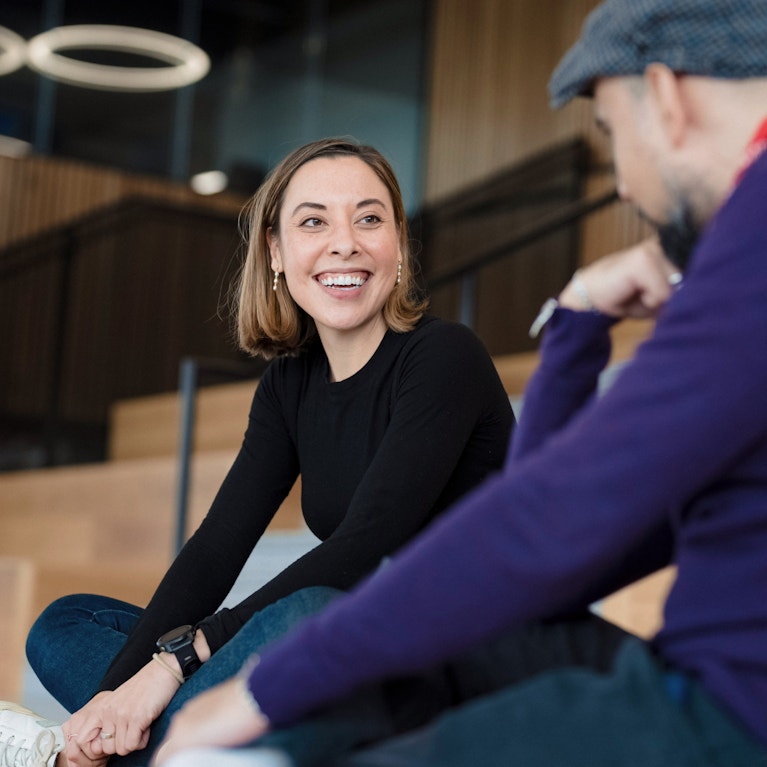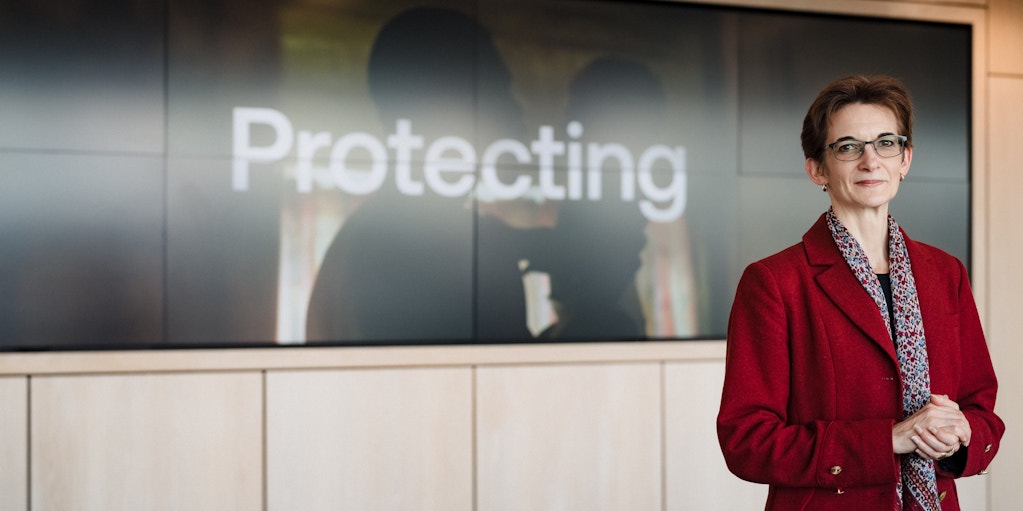
15 minutes with: Cate Pye
Tags
Our experts are at the forefront of bringing ingenuity to life for our clients. They accelerate new growth ideas from concept, through design and development to commercial success. And they revitalise organisations with the leadership, culture, systems and processes to make innovation a reality.
In this series, you’ll meet some of the brilliant minds creating change every day.
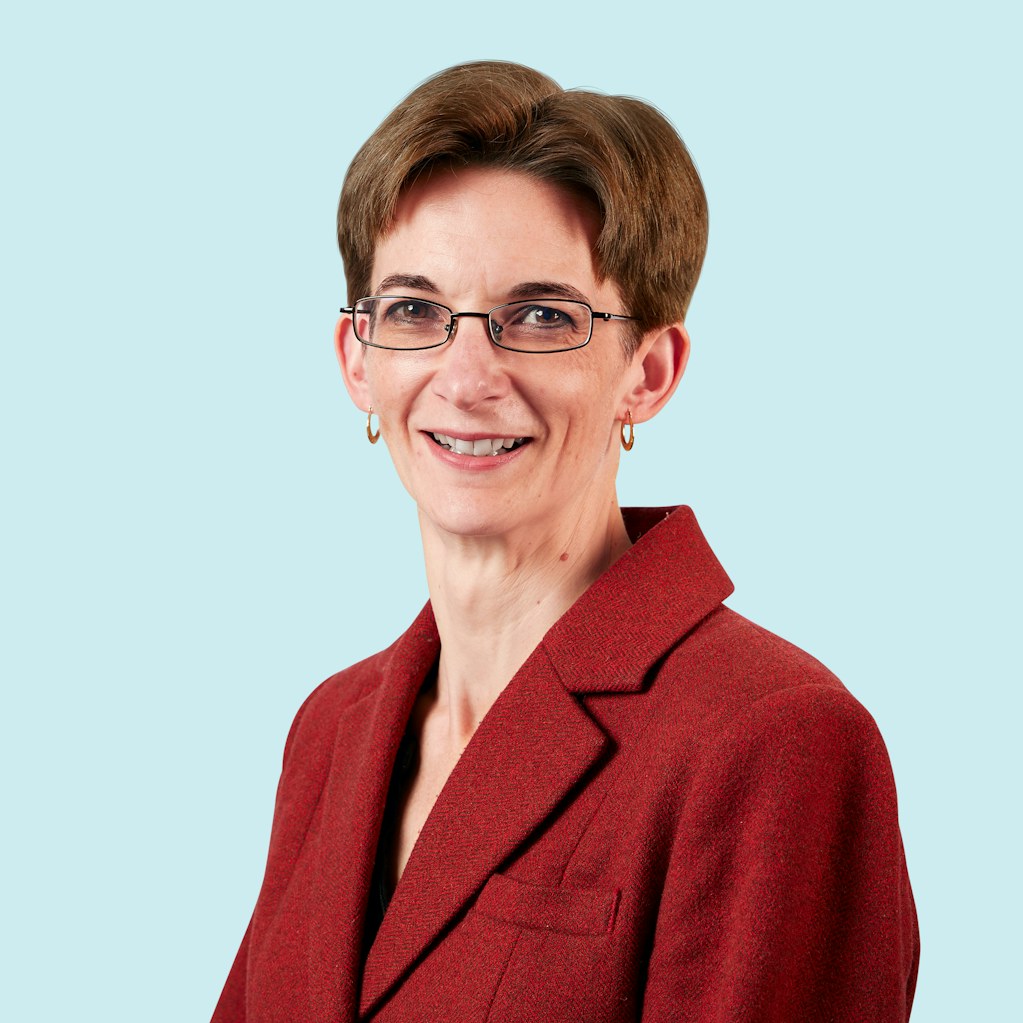
What is your professional background and how did it lead you to PA?
I started as a mechanical and manufacturing engineer, effectively as an apprentice for the Ministry of Defence (MOD). Having been to university I then returned to the MOD for about 10 years working on some fascinating programmes across Land, Sea and Air, then moving into international policy, working with Georgia, Armenia and Azerbaijan (the South Caucasus) during the Georgian ‘Rose’ revolution.
I moved into the Cabinet Office to work in Civil Contingencies, on crisis management during the UK’s Presidency of the EU, and was part of the management of our response to the 7/7 bombings in London, Buncefield fire, flooding in the West Country, Hurricane Katrina, and the Pakistan earthquake over a 15-month period. I then went back to the MOD briefly, focusing on privately financed elements of the Ministry’s capability (PFIs).
My time in the Cabinet Office had made me curious about what was out there in the big wide world beyond government. So I joined PA in 2006, following a friend of mine who had taken a similar route, and focused on transformation and systems engineering including working on the security of the London Olympics, which was absolutely fascinating.
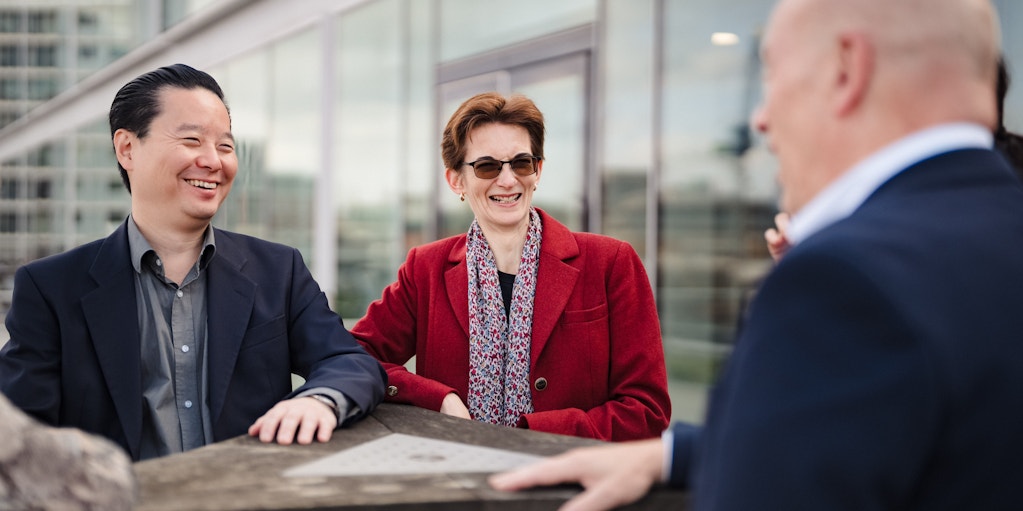
I now lead our global Digital Trust and Cyber Security capability. Over the course of the five years I’ve been back I’ve also led two of our key accounts and I’m now leading our flagship Digital and IT Professional Services framework, which is one of the largest frameworks we have.
It’s been amazing to see our digital and cyber work expand over the last five years to keep pace with clients’ changing needs and opportunities. This is very much about how we combine our digital capabilities with the humans that interact with those new technologies, including AI, automation, quantum, and whatever comes after that. Nobody’s got a crystal ball. Nobody knows exactly what we’ll see next. That’s exciting!”
How would you describe what you do in your role to someone you’d just met?
As the first in my family to go to university and a keen supporter of inclusion and diversity, I’m passionate about creating the environment in which everyone can achieve their potential, whatever that potential is. In my day-to-day job, that’s what I try to do. This translates into cool projects that are interesting for our people and help our clients solve their most complex problems in an environment where the ‘battlespace’ is becoming increasingly cyber and digital.
We talk about helping our clients grow safely in the digital world. That means helping them be the best they can be at their core business, (whether they are a bank, a pharmaceutical organisation or part of government), and providing the expertise and advice around that so that they can use digital technology and cyber security in the best way to achieve that.
To do this our team works with digital and cyber clients across all sectors to help them deliver services better, and more securely, to their customers and users. This includes three building blocks: Building systems that are secure by design and default, following processes that encourage compliance with good practice, and building a cyber savvy mindset across the Board and workforce so they take pride in looking after their user and customer’s data.
With new technologies such as AI and Quantum coming along, the ability to rapidly harness and use that capability safely and securely is becoming absolutely pivotal, because if you can’t do that, whether you’re a commercial organisation or government, you're going to lose your edge.”
In my Capability Lead role I am also delighted to be able to build our team to do this, and it’s a real privilege to work with such enthusiastic, insightful and collaborative colleagues. We have an amazing team across cyber security, operational resilience and data privacy and I’m proud to have been part of growing that over the past few years.
What is it about PA that delivers value to clients, as opposed to another big consultancy?
PA is a firm of subject matter experts, so our clients will get a solution that accelerates their capability and builds on expertise and experience from across sectors to tailor the solution to them.
PA uses our deep understanding of the client, as well as our broad range of experience, to design solutions that we know will work well in the client’s unique environment.”
This combination of subsector expertise as well as technical and specialist competence, sets us apart. Certainly, in the digital and cyberspace, nobody else has the combination of technical expertise (the ability to understand, design, and prototype as we do in Cambridge at our Global Innovation and Technology Centre) and transformation capability (to get the solution adopted and working effectively in the client’s environment ). This means we provide the end-to-end innovation story needed to effectively adopt tech within transformation - we deliver all phases of the lifecycle, so we understand more deeply than others how to best exploit these and what support is needed to help the organisation adopt new technology.
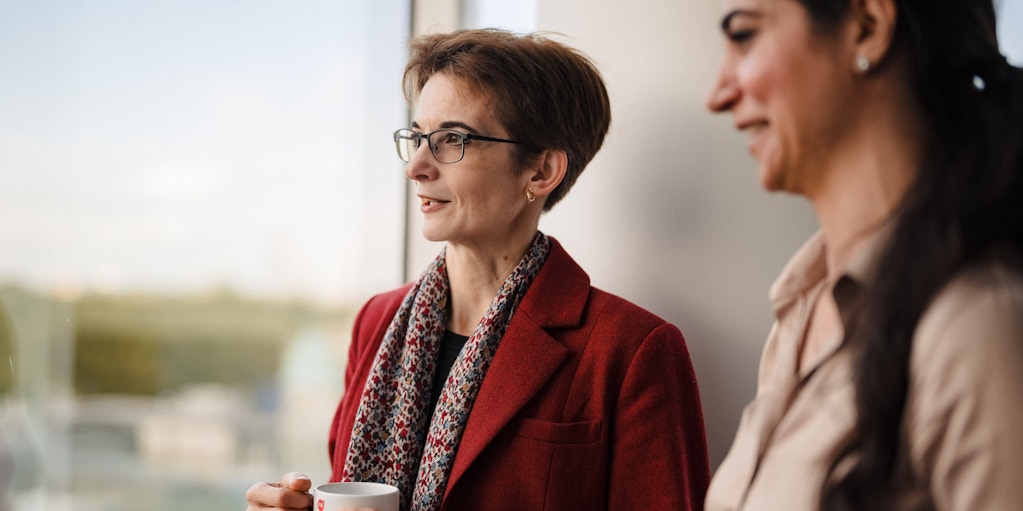
What’s changed in your work in the past few years?
There are four main things.
The first is COVID-19, which changed a whole host of things, including the expectations and nature of the way we work. Our increased ability to work remotely and to engage effectively with our clients and colleagues online means that we can do much more, but we also have to be careful that it’s done in the right way and that we are still providing the ‘hub’ for our people to learn from each other and share experiences.
The second major change is the assumption that we should be building technology into everything we do, (which we absolutely should!,) which is taking us into new conversations. What can we do differently now that technology, digital and AI offer new ways to do things? And how can we redesign how we work to be digital first, so that we change our baseline assumptions and humans can use technology in new ways?
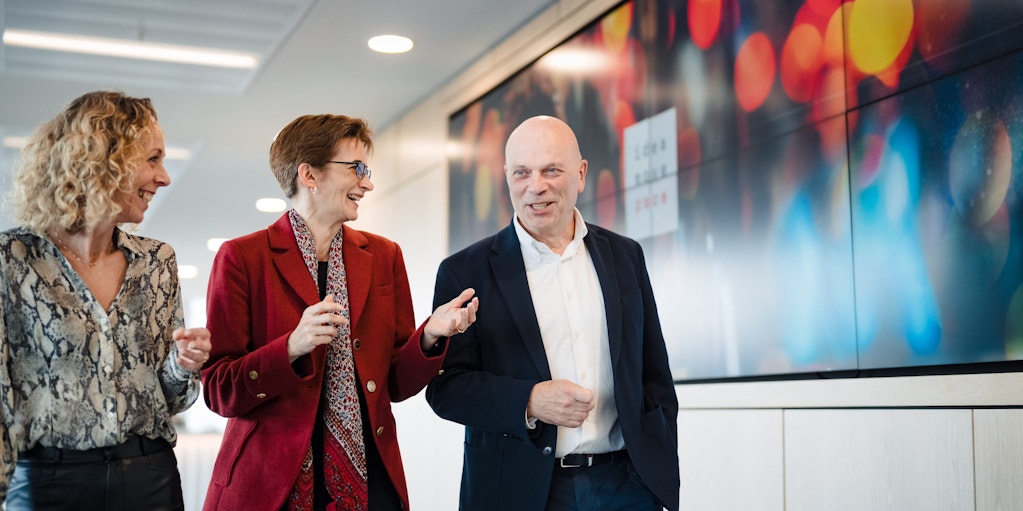
Thirdly, the increasingly unpredictable geo-political environment means that our clients, many of whom are global or who have global supply chains, are really worried about resilience and security - this has changed the nature of client demand and solutions. For example, cyber security now needs to be considered as an integrated package alongside physical and personnel security.
The fourth thing is that our clients now do a lot of what we used to do for them. This isn’t particularly new, but drives how we interact with clients and the lifecycle of our engagements as we set up and hand over capabilities; transferring knowledge so they can build their own capabilities in this space.
How does ingenuity influence your work with clients?
For me, ingenuity is any method of thinking outside of the box. It might be different ways of using technology. It might be thinking laterally about a problem and doing it in a different way, which is one of things that our people at the Global Innovation and Technology Centre are really good at. It might be engaging with the client in a new way to really understand what’s important to them, and help them to think and work differently.
The key to innovation and ingenuity is often to make sure that diversity of thought and inclusion of different views and backgrounds is brought into a project.”
This sounds simple but it often forgotten and without it we will inevitably miss the richness that a spectrum of perspectives would bring – which might have unlocked a genuinely different and exciting way of achieving the end goal.
It’s always worth taking the time to step back and flip the telescope, either by looking from somebody else’s perspective, or thinking about what you would do if you had half the resources or half the funding. Any of those things count as ingenuity in my mind, because they’re about a different way of thinking.
What is exciting you most in your work right now?
The combination of people and tech is either petrifying or exciting, and therefore it has to be exciting. If we use AI in the right way and have the right wrappers around it, there’s a lot we can do both for people and tech. So, let’s make the most of it. How do we help people to understand it? How do we design the tech to make people most effective and at the same time resilient and secure? That balance for me is the exciting thing.
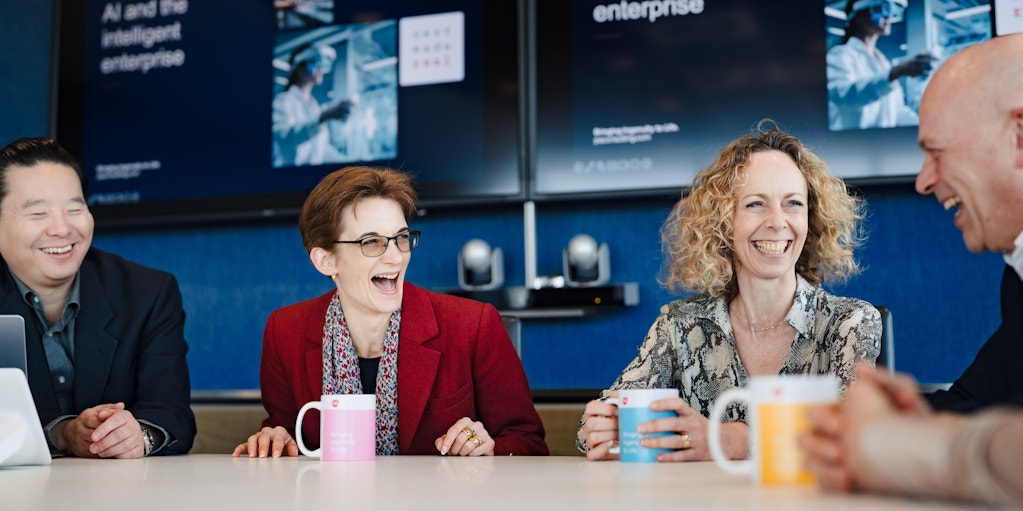
We live in a fascinating geo-political environment. The drivers of climate change and water / energy security, power plays between states and various elections internationally that could change a lot of what we take for granted. The changing pressures across the globe create both risks and opportunities, and I believe that you always have to look for the opportunities to do something different. How can we use the tech-people combination to give us the solutions to those problems?
Where will AI deliver most value, and have most beneficial impact?
For me, it’s about the intelligent organisation, and thinking about how we use technology across transformation, sourcing and delivery in a combination that means clients are able to do more with our help than they could have done without us.
Digital transformation is here, so we have to use the technology in the best way, and design operating models and upskill people to use it in the right way. Otherwise, all we’re doing is digitising around the edge.”
Of course you can automate part of your process, or use AI to do a bit of analytics and web searches, but that won’t fundamentally change what you do as an organisation or how you do it. If you change your mindset to be digital first you can look at doing something completely different and doing it completely differently. What do I mean by that? I mean there will be things that you don’t need to do anymore because you’re working in a digital way. There might be some services you can provide completely differently.
It takes a fundamental change in mindset at the heart of the organisation that says, okay, here’s a blank sheet of paper. What can we do today, what do we expect to do in the not-too-distant future, and how can we design our organisation to get there? That’s quite a leap for most Boards to make because they’ve all grown up with how they do it today. But it’s organisations that make that leap and build agility and adaptability now that will be winners over the long-term. That’s where AI comes in – it’s a fundamental shift in mindset to see AI as transformational.
Of all of the projects that you’ve worked on, which are you most proud of and why?
I ran a strategic partnership with a national cyber security client to help them improve cyber security across the UK. This raised the profile of cyber security and brought some of the good cyber security practices from tech organisations into the main-stream, from government, all the way through to citizens. That was a three-year partnership where we worked really closely with the client to the point that you couldn’t tell who was in our team and who was in the client’s team, which is exactly as it should be. It’s made a genuine difference to what the UK can do and it positioned us as a world-leading organisation in cyber security.
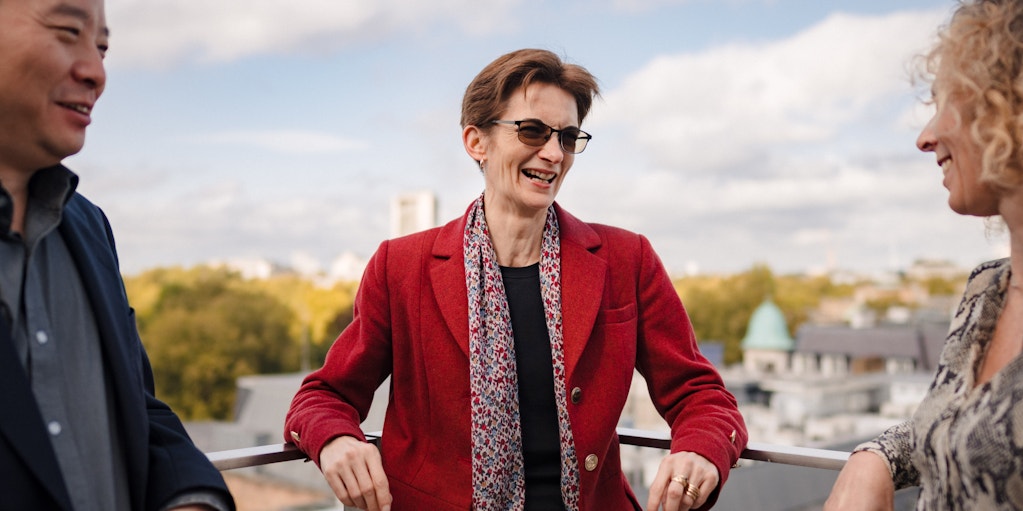
Currently we’re delivering a cloud native DevOps platform, the base on which developers can create new applications. It’s a game changer because we’ve done two fundamental things there. One, we’ve created the ability for them to develop applications and roll them out much faster than they ever could have before, and two, it gives them continuous assurance. When any system is designed or rolled out, it has to be assured for use, which usually takes several weeks, if not months. With the DevOps platform new applications come through so frequently that you need to know it’s assured as it’s created (through checks and standards built into the process). To enable this to happen we’ve developed a method of continuous assurance, which means that as an app comes through the system it’s good to go, and client teams benefit from the speed and simplicity of continuous assurance.
What are your future goals, professionally and personally?
My future goals are around helping our people to grow and develop into the next generation of technologists and leaders for PA.
There is also one around helping our clients to be the best that they can be – and that means PA needs to be the best strategic partner it can be.
On a personal level, I’d like to improve at my hobbies, because we are all always learning. Doing something outside of work gives me another different perspective and set of priorities. I particularly enjoy flying as a private pilot as I am constantly learning to stay current (and deal with the British weather!).
And finally, what are you looking forward to right now?
On a work-related note, I’m looking forward to building our future digital and data capability so we can help our clients deliver in an increasingly uncertain world. Family-wise, my son’s graduation is coming up, and on a personal level, I’ve got an upcoming trip to Argentina.
Explore more
